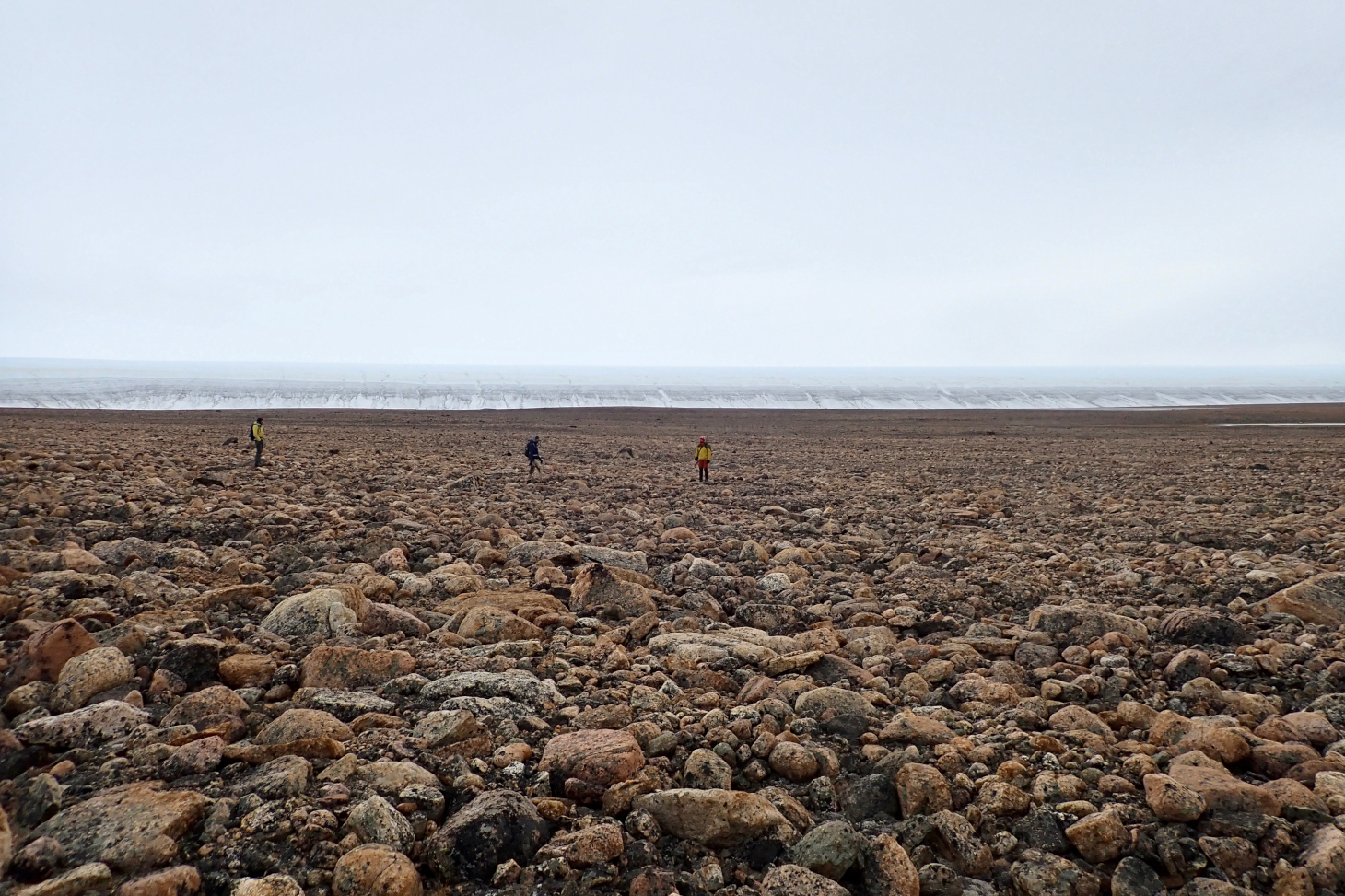Scientists have precisely dated the Hiawatha impact crater, the first known impact crater buried under the Greenland Ice Sheet to 58 million years old – just a few million years younger than the impact that killed off the dinosaurs. The work led by researchers at the Swedish Museum of Natural History, the Natural History Museum of Denmark, and the Globe Institute University of Copenhagen overturns previous suggestions that the impact may have occurred during Earth’s most recent period of ice ages, and opens the door to understanding its possible environmental effects during an important time in Earth’s history.
The Hiawatha impact crater has a diameter of about 31 kilometres and is buried by up to about 1 kilometre of ice at the northwest edge of the Greenland Ice Sheet. When the crater was first reported in 2018, the team was unsure how old it was. Some evidence suggested that the crater may have formed after an asteroid more than a kilometre in diameter slammed into the ice sheet. As the Greenland Ice Sheet only formed about 2.6 million years ago, this would have meant the impact was younger than this and might have happened in the time of our human ancestors. Recent computer modelling by members of the team showed that the shape of the crater is consistent with a young impact into ice but also with a much older impact onto land, and so the discussion – and research – continued.
Nicolaj Krog Larsen, professor at the GLOBE Institute at University of Copenhagen, discovered the crater underneath the Greenland Ice Sheet and says: “
We have been working hard to find a way to date the crater ever since we found it in 2015 and during three field expeditions in 2016, 2017, and 2019 have collected a range of samples that may be related to the asteroid impact”. These expeditions involved many days of hiking across the barren land around the edge of the ice sheet next to the crater to search for needles – impact-related rocks – in the haystack of rocks that the ice has deposited as it advanced and retreated over millions of years.
William Hyde, PhD student at the GLOBE Institute, and Adam Garde (Geological Survey of Denmark and Greenland) studied the Hiawatha rocks and sand grains in the laboratory and concluded that “
these complex samples are indeed impact related, and were molten immediately after impacting due to the extreme pressures and temperatures”.
Hiawatha crater age mystery solved using two different dating methods
Impact-related samples collected from the margin of the Hiawatha crater were analysed by two different dating techniques at laboratories at the Natural History Museum of Denmark in Copenhagen and the Swedish Museum of Natural History in Stockholm. When the researchers compared the results from the two different methods, they found that both methods agreed very well that the impact occurred about 58 million years ago – long before the Greenland Ice Sheet started to form. The findings have just been published in the journal Science Advances.
Dr Gavin Kenny, researcher at the Swedish Museum of Natural History, said: “
It was fascinating to work with the samples from the Hiawatha crater, and based on uranium-lead dating of a mineral called zircon we found that it is 58 million years old. We were all excited and surprised by the new age for the crater. It helps us and others in the search for the impact’s potential environmental effects during an important time in Earth’s history.” The precise zircon age goes hand in hand with argon dating of glasses formed during the impact by Michael Storey, professor at the Natural History Museum of Denmark. He says, “
Dating the Hiawatha crater has been a tough nut to crack, so it is very gratifying that the two labs have been able to work out the age of the crater using two quite different dating methods – the results from the two methods actually agree very well with each other and so I think we have finally nailed the true age of Hiawatha and it is much, much older than many had previously believed.”
Climatic effects
When the Hiawatha impact occurred 58 million years ago, the Earth had recovered from the catastrophic effects of the Chicxulub impact eight million years earlier and was entering a long-term warming trend that was to last about 5 million years. There were also a number of abrupt periods of warming and cooling around this time, the causes of which remain uncertain.
At 31 kilometres across, the Hiawatha impact crater is larger than about 90% of the roughly 200 previously known impact craters on Earth. Although the Hiawatha impact crater is much smaller than the approximately 200 kilometre-wide Chicxulub impact crater in present-day Mexico, which led to the demise of the dinosaurs, the Hiawatha impact would still have devastated the region and may have had wider consequences for the climate and plant and animal life.
While there isn’t yet any direct evidence that the Hiawatha impact disturbed the global climate, the new age will allow researchers to test that possibility. The team says that the next step will be to find traces of the impact in sedimentary rocks deposits at the same time as the impact but far from the crater, in order to better understand the effects the Hiawatha impact had on the local, and perhaps global, environment.
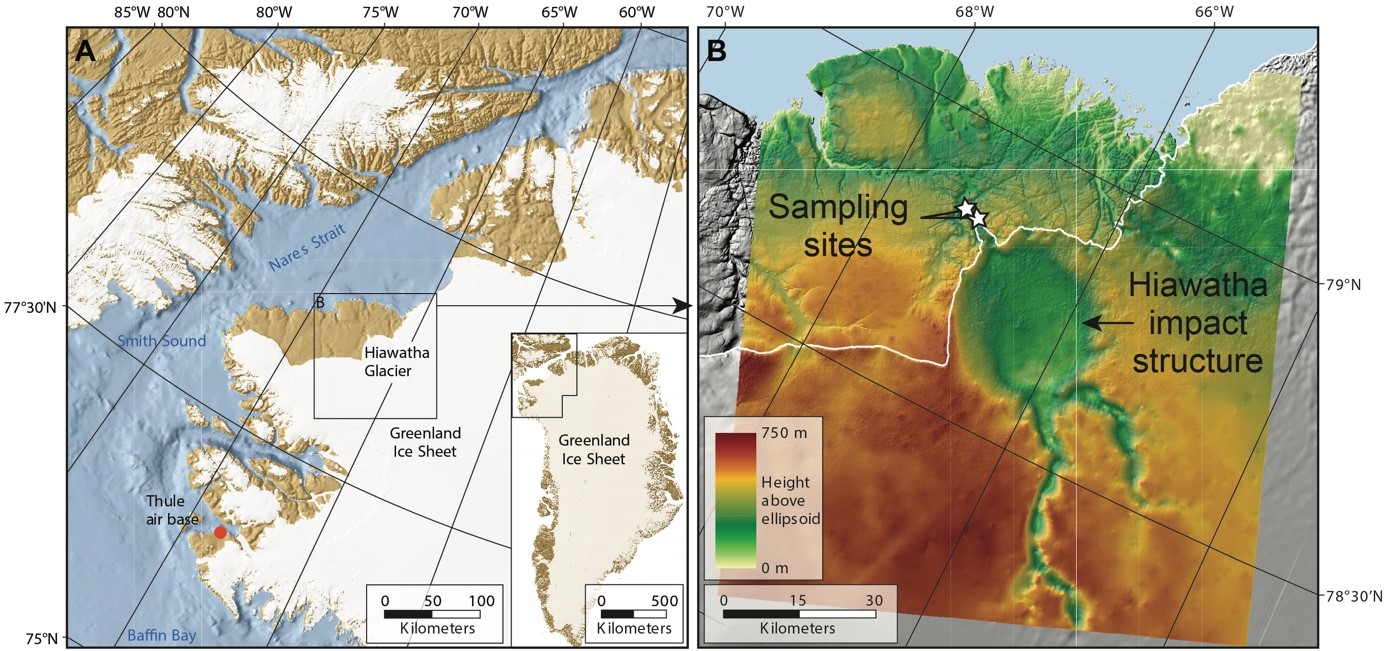
Maps showing the location of the Hiawatha impact crater in northwest Greenland (left) and the shape of Earth’s surface beneath the ice, with the crater clearly visible (right).
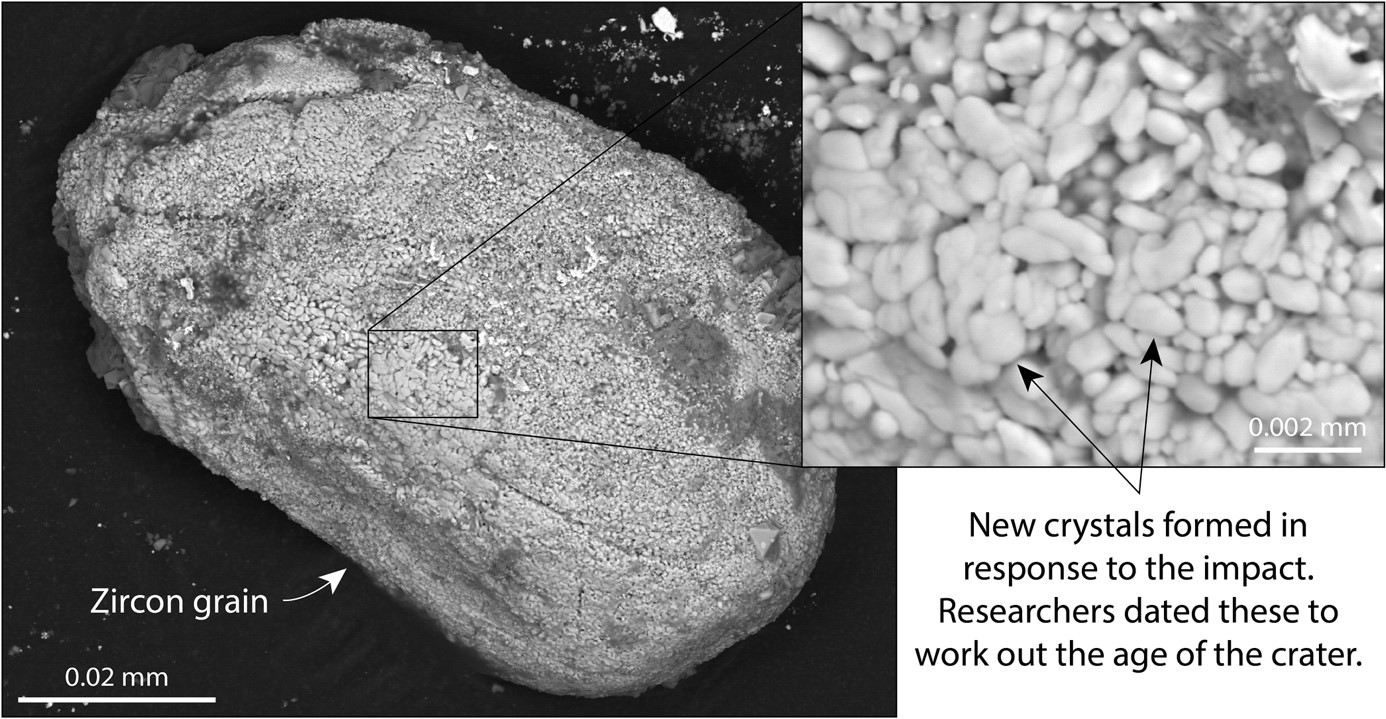
Crystals of the mineral zircon are tiny time-capsules that record the age of many events in Earth’s history. Dating zircon crystals like this was one of the two methods used to calculate the age of the Hiawatha impact crater.
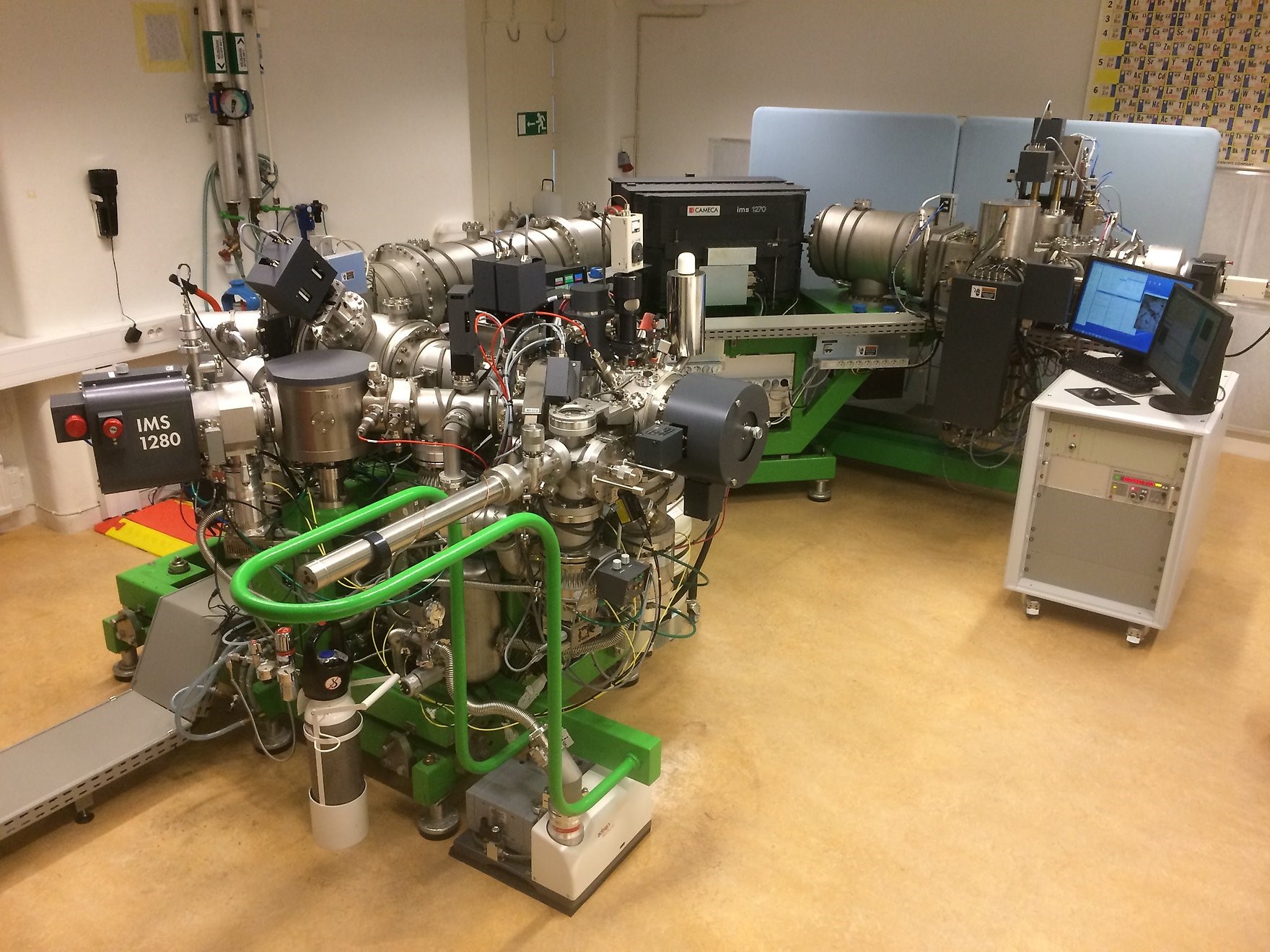
The NordSIMS laboratory at the Swedish Museum of Natural History, one of two labs where analyses were conducted to date the Hiawatha impact crater.
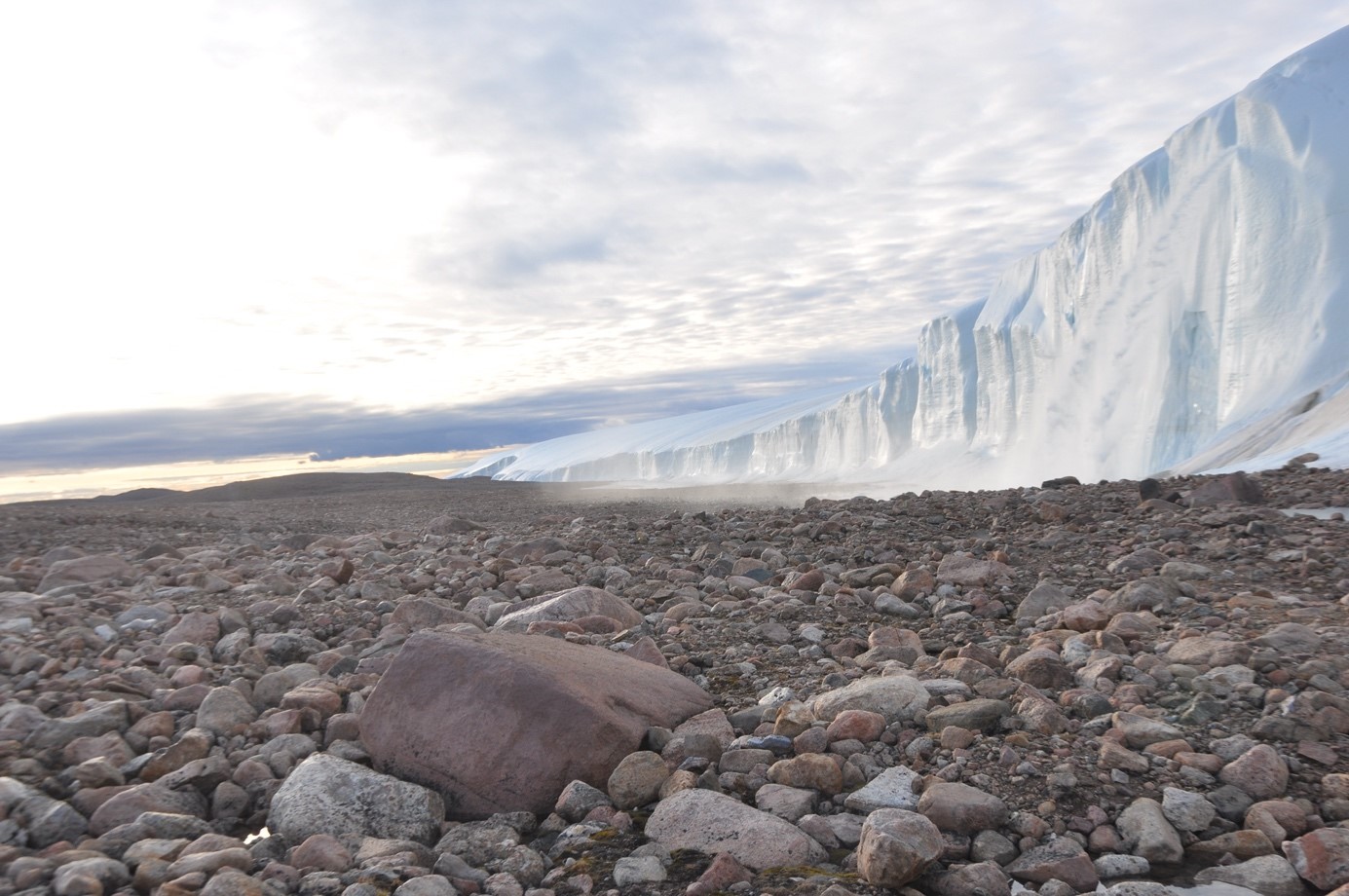
Photo from fieldwork at the edge of the Greenland Ice Sheet in 2019. Photo credit: Joe MacGregor.
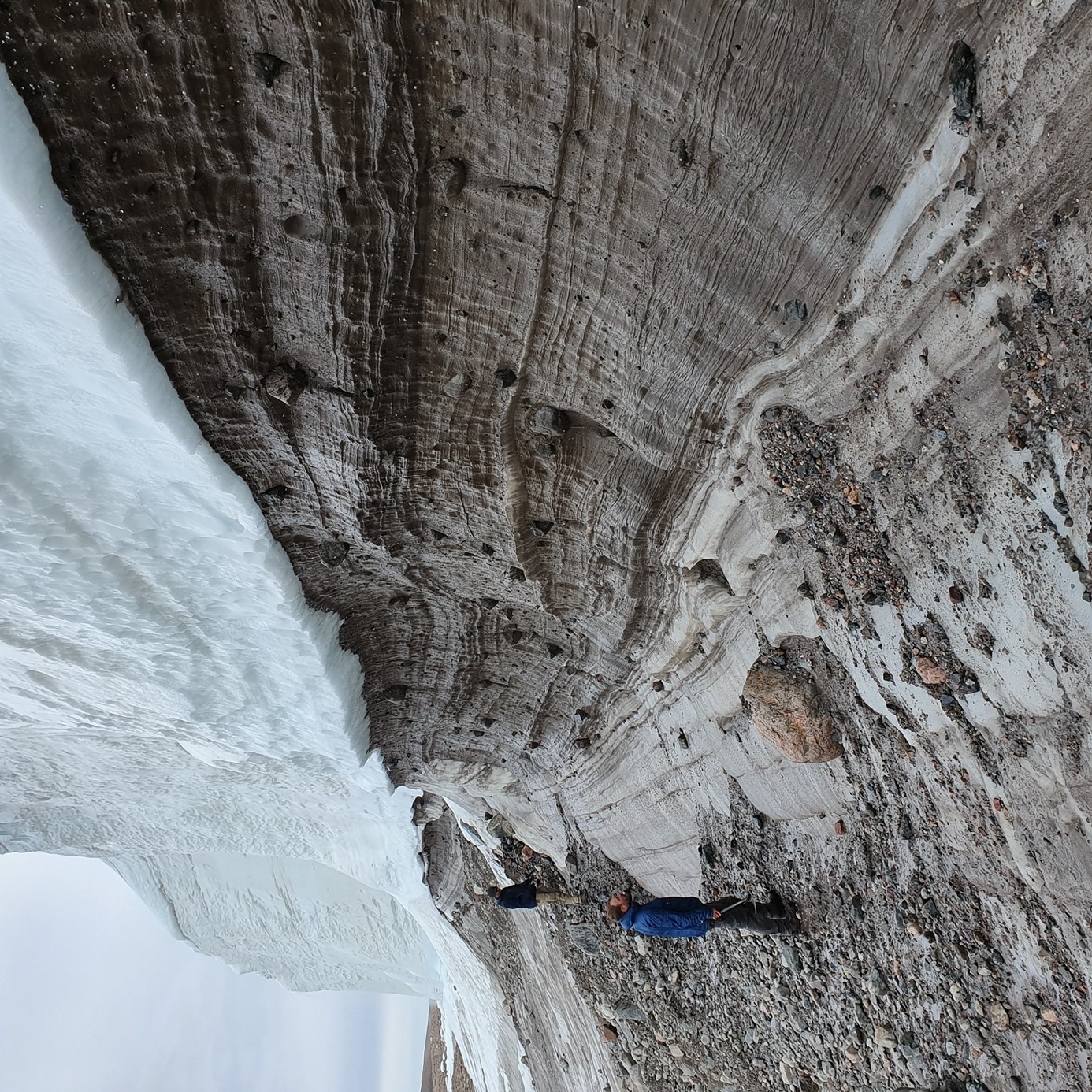
Photo from fieldwork at the edge of the Greenland Ice Sheet in 2019. Photo credit: Shfaqat Abbas Khan.

